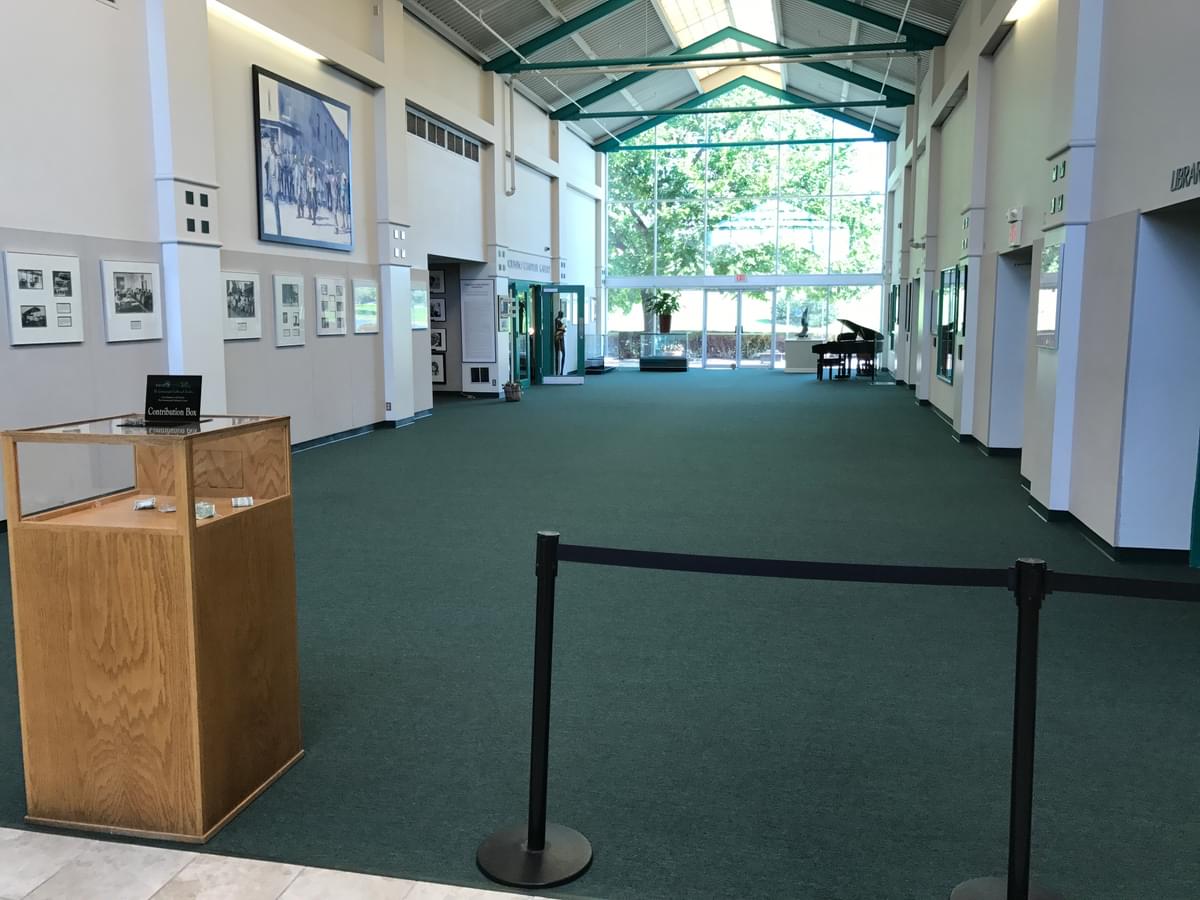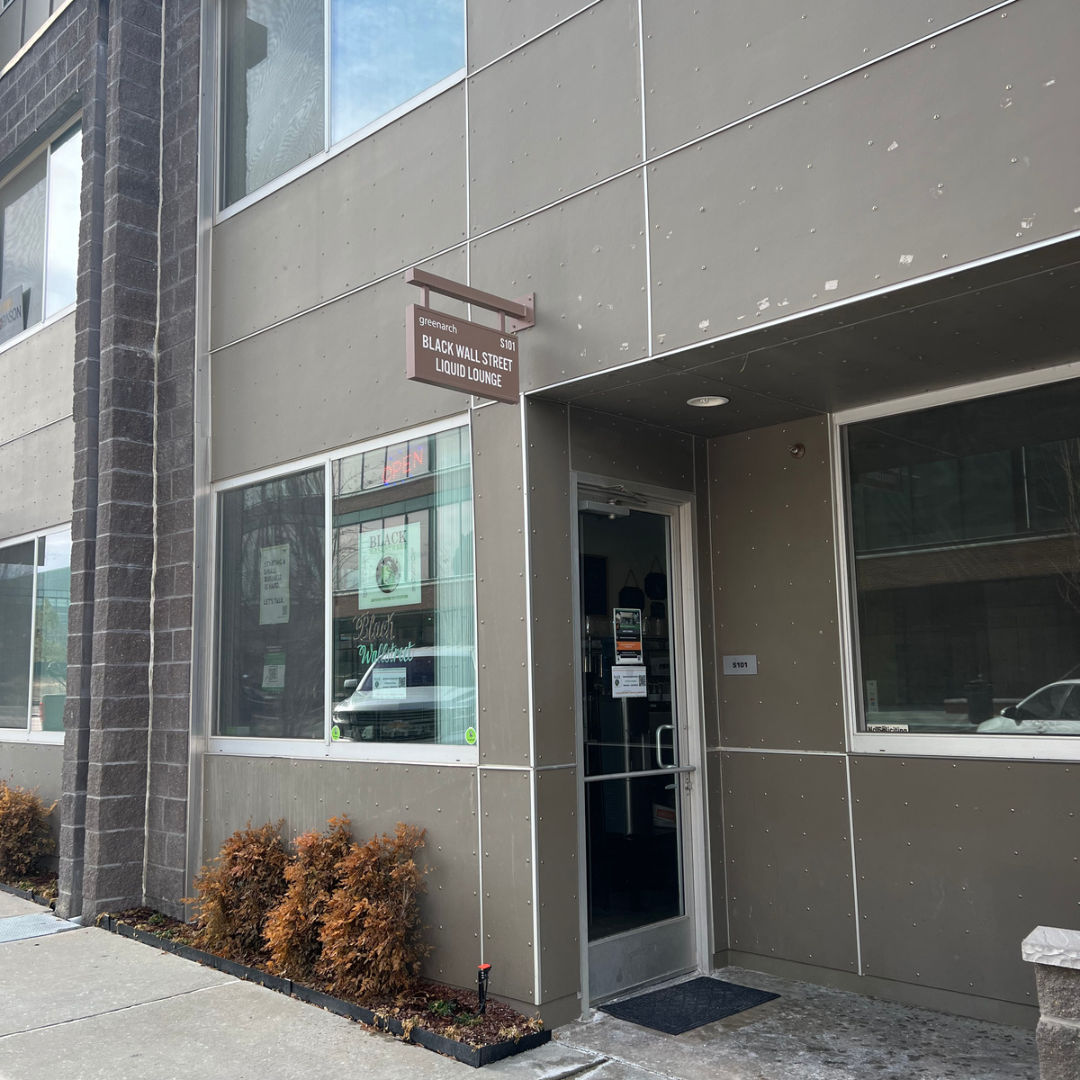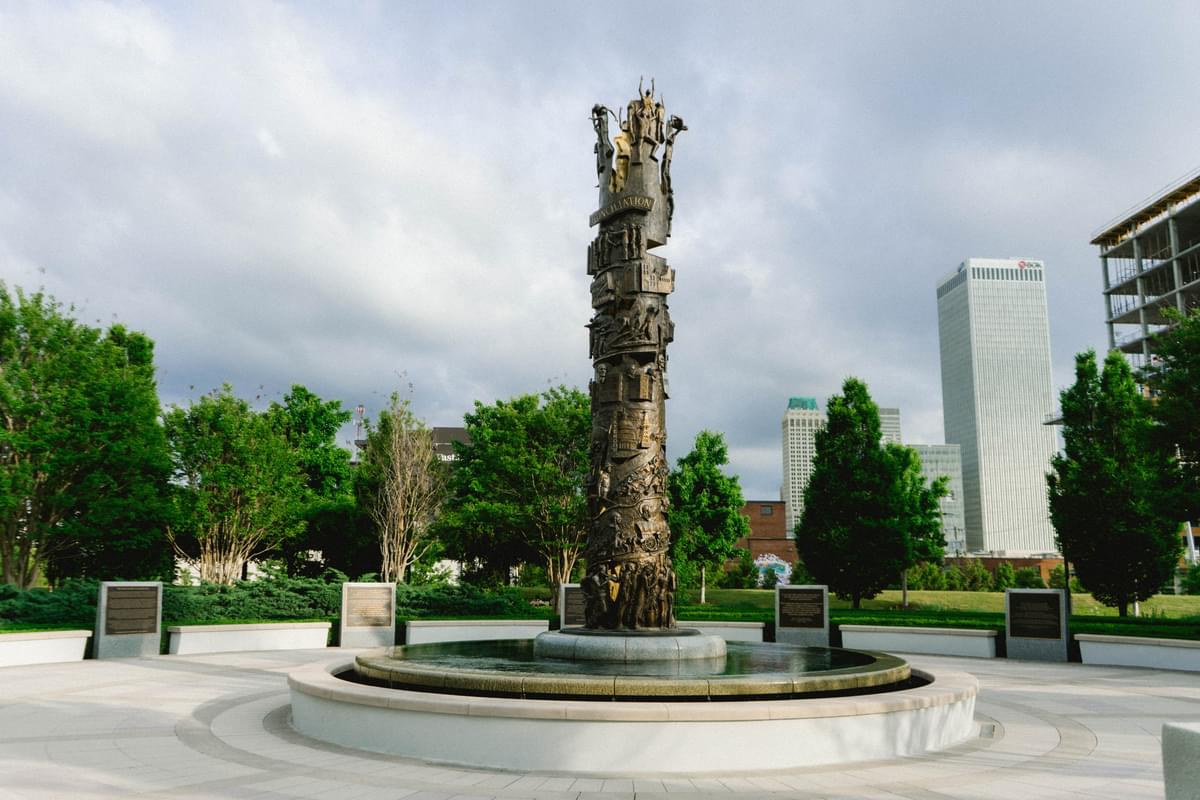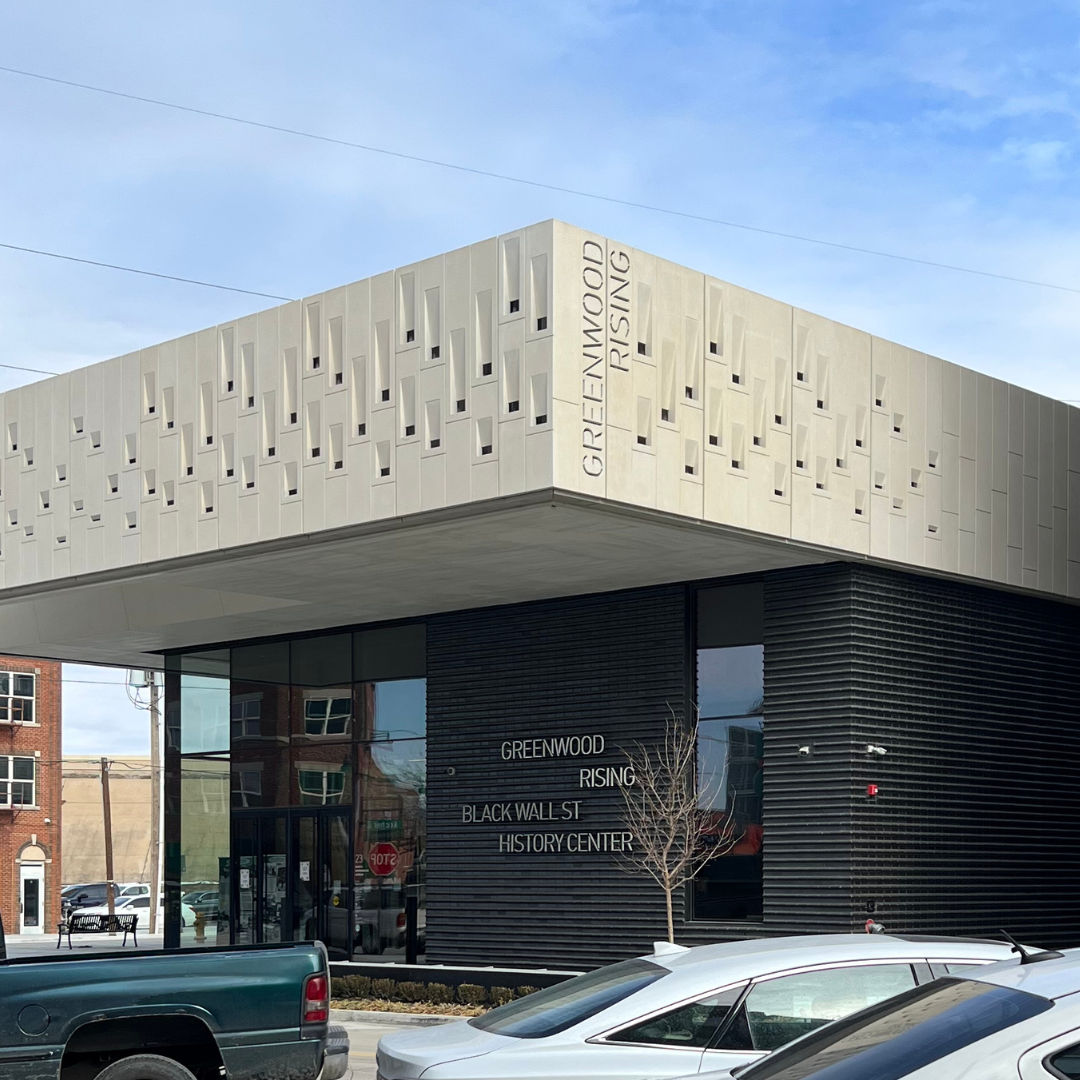The 1921 attack on Greenwood was one of the most significant events in Tulsa’s history. Following World War I, Tulsa was recognized nationally for its affluent African American community known as the Greenwood District. This thriving business district and surrounding residential area was referred to as Black Wall Street.
Although this tragedy devastated 40 square blocks of the Greenwood District and still impacts Tulsa today, the community rebuilt. Just a few short years after the the Tulsa Race Massacre, many Black Tulsans courageously rebuilt their homes and reopened their businesses. We mourn, honor, and remember all those who lost their lives in the Tulsa Race Massacre; acknowledge members of the Greenwood community negatively impacted by inequitable urban renewal policies of the 1960s and '70s; and celebrate the continued resilience and revival of Black Wall Street.
Today the Historic Greenwood District, named in 2022 to the National Historic Registry, is experiencing its third renaissance. Be sure to visit the Downtown area's many businesses, most of which are Black-owned and operated, continuing Greenwood's legacy and entrepreneurial spirit. Here are just a few places to visit.
Mabel B. Little Heritage House

The home of Sam and Lucy Mackey, renamed the Mabel B. Little Heritage House, is the only home built in the 1920s that still stands in the Historic Greenwood District. The Mackeys' original home, located at 327 N. Greenwood, was burned down during the 1921 Tulsa Race Massacre. The Mackeys were one of many Black families who decided to rebuild in the Greenwood District following the Massacre. Their home, available for tours by appointment only, illustrates how a working-class Black family rose above racism and discrimination to build a prominent home comparable to those found in elite white neighborhoods.

Greenwood Cultural Center
The Greenwood Cultural Center exists to preserve Black heritage and promote positive images of Tulsa's Black community. It provides accessible educational and cultural experiences, promotes intercultural exchange, and encourages cultural tourism in the Greenwood District. The Center also hosts educational exhibits, events such as the Don Ross Lecture Series, and programs for young Tulsans. The Center serves as a marker for the Tulsa community, chronicling where we have been, where we are, and where we are going. Support by donating here.
Black Wall Street Liquid Lounge

Black Wall Street Liquid Lounge is one example of the thriving business community in Black Wall Street. The coffee and tea used are all from Black owners. The shop also honors Black history and Black public figures in its art, and even in the names of its creative coffee and tea beverages.
A few recommendations:
- Greenwood Latte: Matcha, vanilla, and milk
- OW Gurley: Milk, charcoal mocha, caramel, chocolate, and ground espresso beans
- Purple Rain: Fresh Line, Sprite, and lavender
Black Wall Street Liquid Lounge is known for its inviting staff and has a vibrant co-working space for all your studying, remote working, and event planning needs.
John Hope Franklin Reconciliation Park

Dr. John Hope Franklin was an American historian and former president of Organization of American Historians, the American Historical Association, and the Southern Historical Association. He is best known for his work From Slavery to Freedom, first published in 1947, and continually updated. In 1995, he was awarded the Presidential Medal of Freedom, the nation's highest civilian honor. Reconciliation Park is a beautiful embodiment of hope in our community. Its vision is to transform the bitterness and mistrust caused by years of racial division, even violence, into a hopeful future of reconciliation and cooperation for Tulsa and the nation. Guided tours of the park and other significant spots are available through the John Hope Franklin Center for Reconciliation.
Greenwood Rising

Opened in the centennial year of the Tulsa Race Massacre commemoration, Greenwood Rising history center features state-of-the-art exhibits and immersive experiences that tell the story of Greenwood. Explore how and why the African American community came to Greenwood, the struggles they faced, and the ways they succeeded in building a vibrant and wealthy community, even in the face of systemic racial oppression. Tickets are required for scheduled visits and can be scheduled online in advance of your visit.
In 2022 the museum expanded its reach when it became part of Bloomberg Connects, a free mobile app featuring guides to over 80 museums, galleries, sculpture parks, gardens, and cultural spaces. The app is available in the App Store and Google Play.
Mentioned in this Post
Greenwood Cultural Center
322 N Greenwood Avenue
John Hope Franklin Reconciliation Park
321 N Detroit Avenue
Black Wall Street Liquid Lounge
10 N Greenwood Avenue
Greenwood Rising
23 N Greenwood Avenue